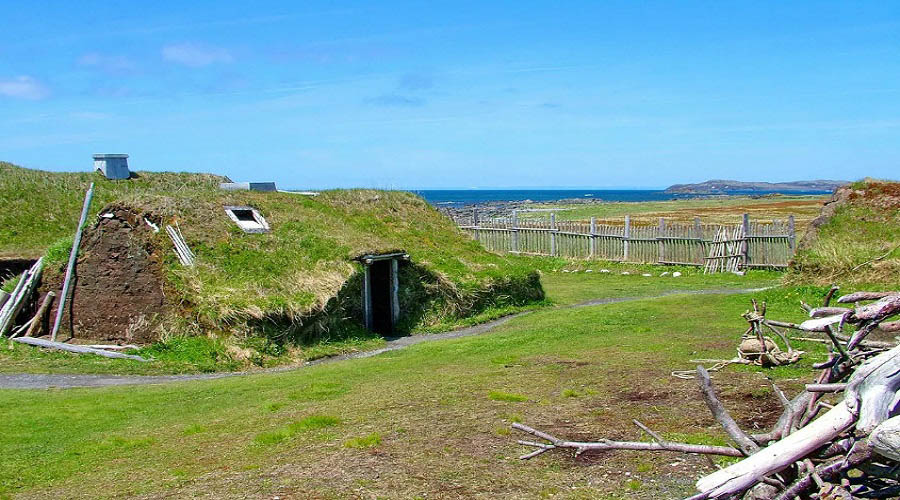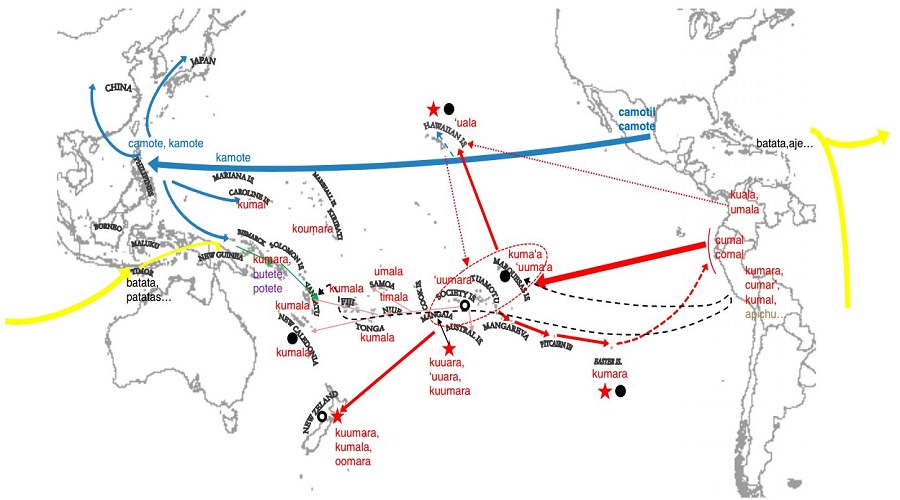The response to the aforementioned inquiry appears to be apparent for the majority of individuals, as they were educated in school that Christopher Columbus is the reason for celebrating Columbus Day. However, this stance is not without ambiguity. So who was the first to discover America, please read the article to know exactly this issue!
Table of Contents
ToggleWho discovered United States of America – Christopher Columbus
The American populace enjoys a respite from their laborious routine on the tenth of October in observance of Columbus Day. This customary commemoration recognizes the occasion on October 12th in 1492, marked by the Italian seafarer Christopher Columbus’ inaugural arrival on the American continent, proclaiming possession for Spain. This traditional festivity has held the status of national holiday in the United States since the year 1937.

The statement often espoused, “Columbus discovered America,” lacks accuracy in light of historical evidence. A more fitting formulation would be that Columbus initiated the introduction of the Americas to Western Europe via his four voyages spanning from 1492 to 1502. Furthermore, his endeavors paved the path for the significant inflow of western European settlers who subsequently established various new nations, including the United States, Canada, and Mexico.
The statement that Christopher Columbus “discovered” America is inaccurate as it ignores the presence of the indigenous population who had inhabited the land for thousands of years prior to Columbus’ arrival.
Who discovered America first
VOA sought insights from Michael Bawaya, the editor of American Archaeology, regarding the identity of the first Americans. Bawaya posited that individuals who immigrated from Asia, likely arriving no more than 15,000 years ago, were the rightful recipients of this designation.
Fifteen-thousand years ago, individuals traversed the Bering land bridge, which previously linked the current U.S state of Alaska with Siberia, due to the significantly lower sea levels of the era. The land bridge, spanning vast distances of hundreds of kilometers, permitted human migration across the continents.

The region in question is presumed to have bore a close resemblance to the present-day Seward Peninsula in Alaska – a barren and dry tundra, lacking in trees. However, it is noteworthy that the area was teeming with life despite its apparent hostility towards life-forms.
As declared by the U.S. National Park Service, the Bering land bridge played a crucial part in facilitating the propagation of plant and animal life amongst continents. Owing to this, several types of animals including the woolly mammoth, mastodon, scimitar cat, Arctic camel, brown bear, moose, muskox, and horse, and other species were able to traverse between the continents. Moreover, birds, fish, and marine mammals established their migration patterns, which remain intact up to present times.
According to archaeologists, humans embarked on an incessant journey to secure sustenance, water, and shelter, eventually leading to their proliferation throughout North America, and subsequently, Central and South America.
Prior to the 1970s, the initial inhabitants of America were identified as the Clovis peoples, named after an early settlement located in Clovis, New Mexico, with an archaeological age exceeding 11,000 years. Furthermore, genetic analysis indicates that this group is the direct progenitor of approximately 80% of all indigenous populations throughout the Americas.
Furthermore, it is widely acknowledged that there were civilizations that existed prior to the Clovis people. As Bawaya suggests, these groups have yet to be definitively identified. However, remnants of these civilizations can be found across vast distances, from as far north as the U.S. states of Texas and Virginia, to as far south as Peru and Chile. Due to their unidentified status, they are commonly referred to as the Pre-Clovis people.
The situation becomes more intricate due to the emergence of new findings that challenge the timeline of human arrival in North America, and suggest the possibility of pushing it back even further in time, potentially reaching 20,000 years or beyond. Nevertheless, the scientific community has yet to reach a consensus on this matter.
Back to the Europeans
It can be acknowledged that the Clovis and Pre-Clovis populations, who may have vanished long ago, have nonetheless left a distinct imprint in the genetic makeup of virtually all indigenous Americans. Therefore, credit can be attributed to these groups for their discovery of America.
Were there any European arrivals from the east coast of America, or was Columbus the first European to catch a glimpse of the unspoiled, lush paradise that America must have been centuries ago? It has been established that some people arrived on the western coast, but the question remains as to whether there were any earlier arrivals from the east.
Not even close.

Concrete evidence exists to substantiate that Europeans, specifically the Vikings, had explored Canada approximately five centuries prior to the journey of Columbus. The Canadian island of Newfoundland’s l’Anse Aux Meadows is the location where traces of their visitation still linger. Today, recognized as a UNESCO World Heritage site, it is comprised of eight archeological structures. These constructions were more than likely wooden and were possibly covered with grass and soil materials.
The current landscape of the region displays a scarcity of vegetation, however, a millennium ago, trees could be found in abundance and the vicinity may have served as a seasonal point of refuge for Vikings to seek shelter during harsh winters and conduct maintenance on their vessels. The nature of the settlement’s permanence is uncertain, however, it is evident that the tenacious Norsemen had already inhabited the area well before the arrival of Columbus, demonstrating their expansionist objectives.
One final mystery
One compelling aspect to consider in the narrative of America’s discovery is the Sweet Potato.

Undoubtedly, the sweet potato is a lesser-known root vegetable that originated from South America. However, it is intriguing to know that this humble pinkish-red tuber has been part of the Polynesian cuisine for almost a millennium now. The question that remains intriguing is how sweet potatoes made their way to Polynesia.
Scientific analysis of the DNA of sweet potatoes originating from Polynesia and South America has led researchers to hypothesize that they were either brought back to Polynesia by travelers who had visited South America, or islanders had brought them with them during their exploration of the Pacific. This suggests that approximately during the same period when Nordic sailors were felling trees in Canada, individuals in Polynesia were possibly tasting sweet potatoes from South America for the very first time.
In regard to genetics, an examination conducted in 2014 regarding the DNA of individuals indigenous to the Polynesian island Rapa Nui, commonly referred to as Easter Island, concluded that a considerable quantity of Native American genes were present. The discovery of American DNA within the genetic composition of Rapa Nui’s inhabitants provides indications that these two societies had been in proximity to one another during approximately 1280 AD.
It has been posited by Gavin Menzies, a retired British Naval officer, that the Chinese may have established colonies in South America in 1421, thereby representing an alternate theory in this domain.
According to a theory proposed by a retired chemist, John Ruskamp, certain pictographs found in Arizona bear a striking resemblance to Chinese characters, leading him to suggest that the Chinese may have been present in Arizona around 1300 BC.
We would like to draw attention to these two entities as they have been the subject of recent newspaper articles. It is important to note, however, that they have been thoroughly discredited, and therefore we will refrain from providing further elaboration.
So what to make of all this?
At VOA, our aim is to narrate the story of America, and it is evident that America has been a diverse nation long before the Statue of Liberty encouraged the global community to “Give me your tired, your poor, your huddled masses yearning to breathe free.”
North and South America comprise a diverse assortment of cultures, which predates their recorded history. People have been arriving in this region to pursue improved standards of living, plentiful sustenance, access to water and exploitable opportunities.
Today, maybe not that much has changed.
Who discovered electrons protons and neutrons?
The discovery of neutrons, which possess no electric charge and nearly the same mass as protons while remaining electrically neutral,...
Read moreWho is the painter of The Mona Lisa?
The Louvre Museum houses one of the most iconic portraits in the history of art, namely the Mona Lisa painting....
Read moreWho makes Genesis vehicles?
The Hyundai Motor Group produces luxurious automobiles under the name of Genesis. In 2015, the company announced its intention to...
Read moreWho discovered United States of America?
The response to the aforementioned inquiry appears to be apparent for the majority of individuals, as they were educated in...
Read moreWho created the first atomic bomb formula?
The journey towards the creation of the atomic bomb was initiated by a moment of profound realization in London. Subsequently,...
Read moreWho has the most followers on instagram in the world?
In response to an inquiry of utmost interest, it has been revealed that the individual with the most followers on...
Read moreQuotes about friends who are fake
The end of a friendship can be an excruciatingly painful experience, potentially overshadowing other kinds of heartbreak. The betrayal of...
Read moreWho is the top 10 richest people in Asia?
The ever-changing wealth landscape in Asia has continually garnered international attention, as a vast number of individuals have left their...
Read moreWho is the most richest person in the world currently?
With a net worth of $239.3B, Elon Musk currently holds the top position on the list of the world's wealthiest...
Read moreHow deep is the wreck of The Titanic?
On April 15, 1912, the RMS Titanic endured a tragic fate in the North Atlantic Ocean as it collided with...
Read moreThe biggest country in the world by population
Data published by the World Bank reveals that in 2021, the 25 most populous countries in the world accounted for...
Read more































